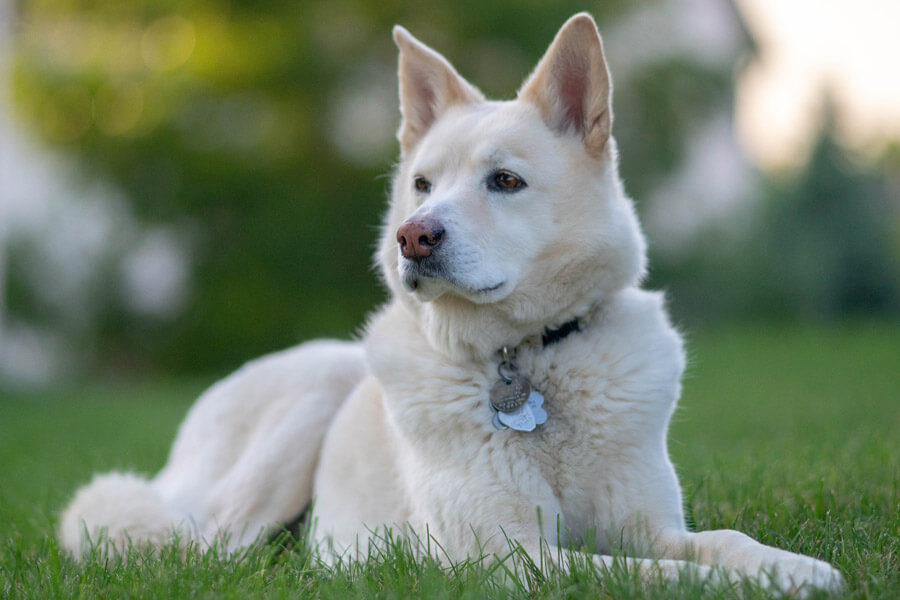Arthritis is common in animals, as it is in humans. As such, animal health organisations are working hard to raise awareness amongst pet owners to help improve the health of many cats and dogs.
While arthritis in cats and dogs is well recognised, some pet owners may not notice the signs and symptoms. Certainly, arthritis in cats and dogs can go undetected. This is particularly the case in cats, as they tend not to demonstrate lameness as obviously as dogs do.
Small animal surgery specialist Dr. Stephen Fearnside says, “A significant proportion of the pet population suffers from osteoarthritis. As medical advancements continue, our patients live longer and as a result, the number of patients we see with chronic diseases such as osteoarthritis will increase and will require management.”
Thankfully, there are treatments and therapies available to help manage cats and dogs with osteoarthritis. However, the initial diagnosis is important.
Certainly, all pet professionals can play a part in talking to pet owners about the common signs of arthritis in cats and dogs and raising awareness of osteoarthritis.

Signs of arthritis in cats and dogs
Common signs and symptoms of osteoarthritis in cats and dogs include:
- Stiffness
- Lameness
- Pain – indicated via moaning, restlessness, altered behaviour and/or reluctance to jump or exercise
The stiffness and lameness associated with osteoarthritis is most commonly displayed after periods of rest.
An important point to share with pet owners is the fact that not all types of arthritis in cats and dogs causes pain and lameness and, therefore, it can be difficult to recognise. Cats and dogs can have silent osteoarthritis, in which there may be stiffness without pain or lameness.
By educating owners about some of the common underlying causes of osteoarthritis, they may identify the possibility of osteoporosis in their pet earlier.
Underlying causes of osteoarthritis in dogs can include:
- Hip dysplasia
- Elbow dysplasia
- Broken bones
- Patella (knee cap) dislocation
- Fractures
Arthritis in cats is more commonly linked to general ‘wear and tear’ of joints and ligaments and therefore, osteoarthritis tends to affect cats later in life, when compared to dogs.
Aside from age, other risk factors for arthritis in cats and dogs include:
- Obesity
- Large breed (canine breeds, such as German Shepherds, Labradors and Golden Retrievers are more at risk)
- Poor nutrition
- Genetics
- Repetitive stress injuries
If a pet owner fears their dog or cat may have arthritis, they should visit their vet for a thorough examination and X-ray.

Treatment options
Fortunately, we’ve become better at recognising the problem of arthritis in cats and dogs and there are plenty of management options for veterinarians to investigate and use,” says Dr. Fearnside.
Managing cats and dogs with arthritis incorporates different areas including:
- Pain reduction
- Increased mobility
- Reducing disease progression
- Improved quality of life
“Rehabilitation and physiotherapy are playing an increasing role in the multi-modal management of chronic pain in dogs and cats,” says Dr Fearnside.
“Therapies such as massage, joint mobilisation, stretching and targeted exercise programs have become increasingly used in the management of osteoarthritis. Other therapies such as cold laser and therapeutic ultrasound are also being investigated.”
While the treatment options will be based on the individual animal and are likely to include multiple modalities, there are certainly areas in which the pet owners can play a vital role.

Weight control & activity management
We know that obesity and lack of exercise can contribute to the risk for arthritis in cats and dogs. Without a doubt, it’s important to ensure that pet owners are aware of this.
According to the American College of Veterinary Surgeons (ACVS), weight control is one of the most critical aspects of osteoarthritis management. Excess fat supports the inflammation process. In addition, the added body weight puts extra force on the joints, which can lead to pain and decreased mobility.
If you have a client whose dog or cat is overweight, it’s really important to talk to them about the impact this might be having on their animal’s joint health and mobility.
The ACVS advice for pet owners, regarding their pet’s weight, is that they should be able to:
1) feel their dog’s ribs but not see them
2) see an hour-glass figure when viewed from above
3) see a tucked up belly when viewed from the side
Indeed, exercise is an important part of weight management but pet owners need to know that high-impact activities, such as jumping and running, should be restricted, as they can increase pain and inflammation.
Instead, owners should focus on gentle exercise, such as on-leash walks and short-duration, low-impact exercises like swimming and moderate play. These types of low-impact activities help to strengthen the muscles, flex the ligaments and tendons and reduce joint stiffness through fluid movement.

Pain control and joint supplements
“While a cure for osteoarthritis is not yet in sight, we do have many management options available to us in our effort to reduce pain and improve the quality of life of our pets suffering with the disease,” says Dr Fearnside.
For many animals with arthritis, weight control and activity management alone is not enough to address their pain and immobility. In these cases nonsteroidal anti-inflammatory drugs (NSAIDs) and joint supplements may be used. Pet owners should discuss these options with a vet, taking into account side effects and supporting evidence for efficacy.
“It’s very hard for pet owners to see their animals suffering and in pain. Providing pets with a healthy and active lifestyle, a nutritious diet, and a preventative health care plan formulated in consultation with a veterinarian gives them the best chance of living long and happy lives.”
While osteoporosis is a progressive disease that worsens over time, pet professionals can highlight the fact that many cats and dogs with arthritis can live a happy and comfortable life following diagnosis.
Information sources:
https://www.vetvoice.com.au/media-releases/managing-joint-pain-in-dogs-and-cats/
https://www.willows.uk.net/specialist-services/pet-health-information/orthopaedics/osteoarthritis
https://www.acvs.org/small-animal/osteoarthritis-in-dogs
Latest posts by Liz Walden (see all)
- Pet health: Medicinal cannabis for pets - December 27, 2021
- What pet business insurance do I need? - November 17, 2021
- Pet sitters: how to take time off - November 15, 2021










Leave A Comment